BATCH CT SCANNING SAVES TIME & MONEY
Industrial CT Batch Scanning - Pros & Cons
Typically, if a large batch of parts is being CT scanned it’s because that batch of parts has been quarantined due to a quality concern. Industrial CT Batch Scanning is used to streamline large projects to reduce time and cost for our clients. Instead of scanning a single sample at a time, we can stage two or even fifty samples per scan.
Depending on the project, the benefits are staggering. However, there are additional variables that are introduced including additional CT artifacts (beam hardening, streaking, etc.) as well as an additional level of product management to track samples inside of a large dataset. Batch scanning also necessitates a larger field of view (lower resolution) and therefore important defects may not be characterized.
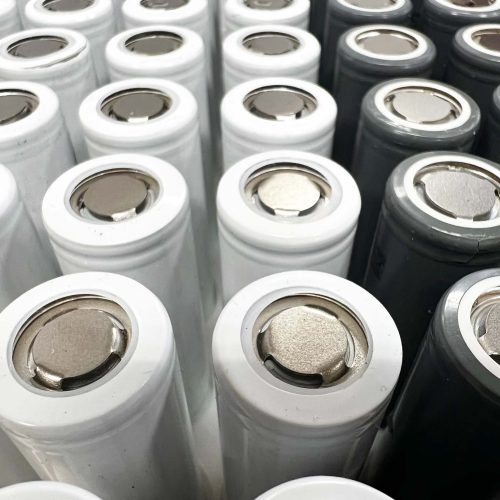
Importance of RQIs
RQIs (representative quality indicator) are used for many types of projects including batch scanning. An RQI is an object that is used as a gauge to verify defect detectability. Just because we have the sensitivity to detect a defect does not mean we can detect that defect. An RQI can be a rejectable part, or a similar material with a manufactured defect within it.
This image shows an RQI battery with pitting through the external shell. This part is rejectable. If we can see the rejectable defects in a high magnification, single part scan, but cannot see it in a lower resolution batch scan, then we must adjust our technique. This optimization can take many development hours. Parameters like quantity of parts, minimum magnification, fixturing adjustments are all considered.
High Res RQI Scan of (1) 18650 Cylindrical Cell
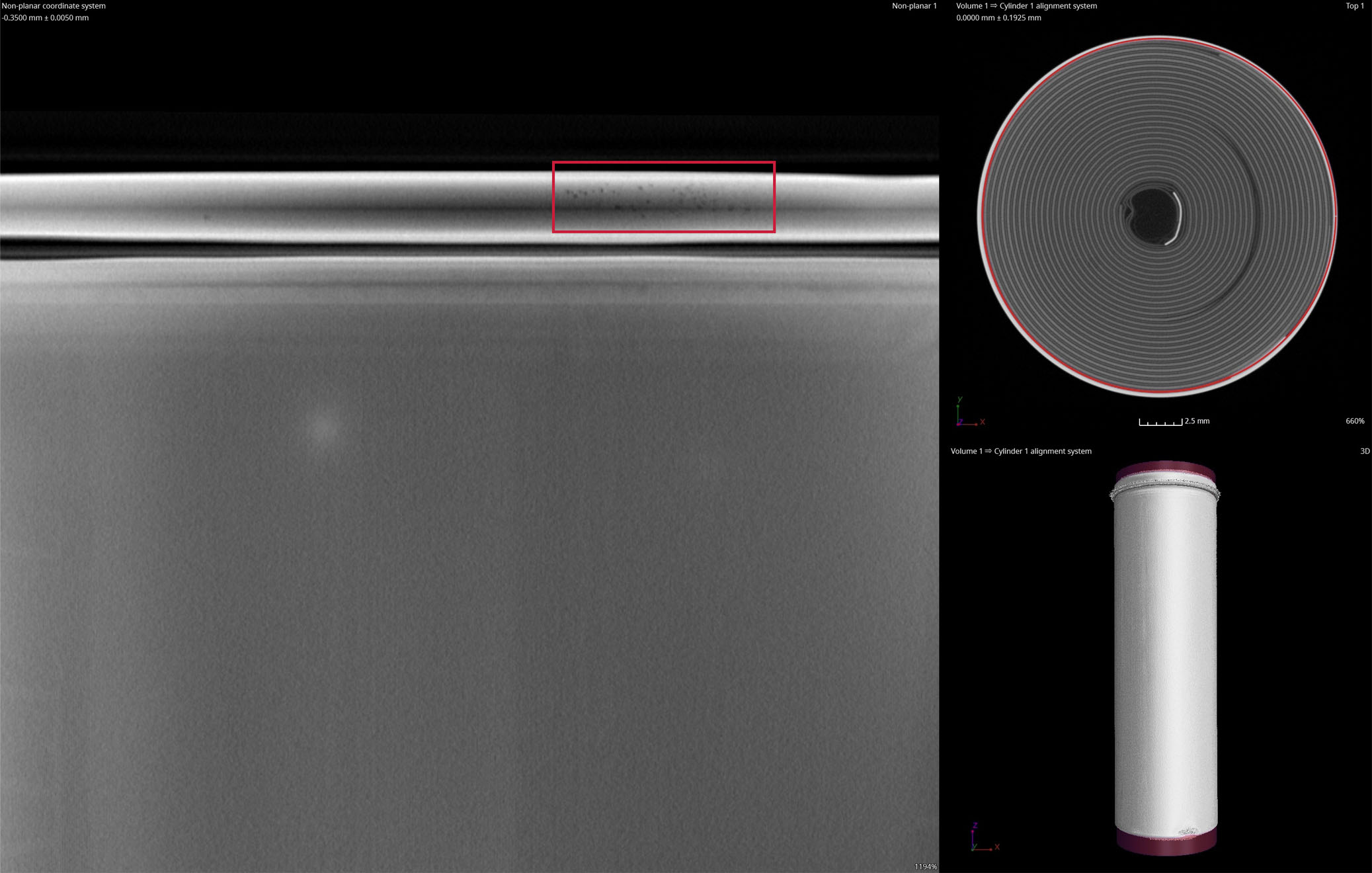
Low Res Batch Scan of (40) 18650 Cylindrical Cells
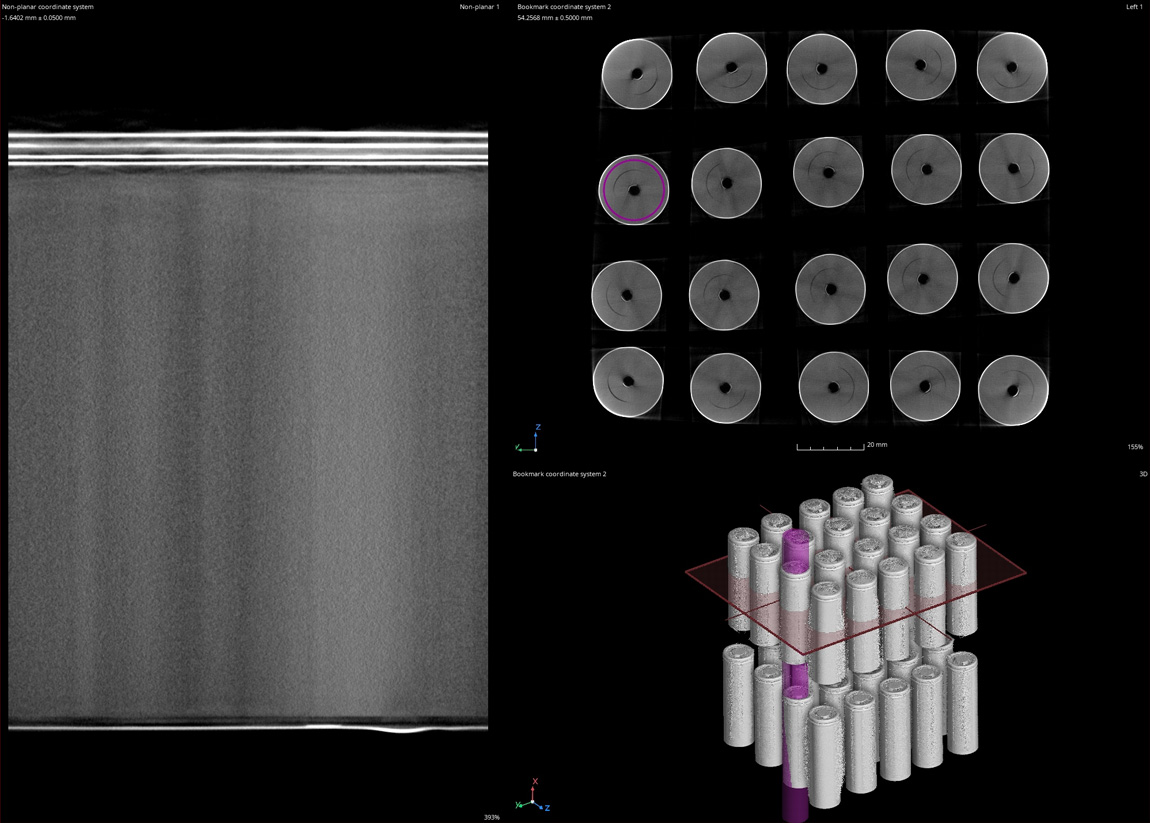
Optimizing Datasets
Industrial CT Scanning is extremely data heavy. A standard scan can be between 15 and 30 gigabytes, while a helical or offset scan can be 100gb to 250gb. Trimming non-critical areas of the datasets reduces processing time and data storage requirements. Additionally, many of our clients use MyVGL and our User Guide and receive the CT files on high speed USBs or external hard drives. Most people don’t have computers that can handle 15gb files.
These images show the front end optimization (boxed zones are the acquired areas of interest) as well as the final reconstructed CT scan in Volume Graphics with two battery cell ends. The total size for this batch scan was under 2gb.



